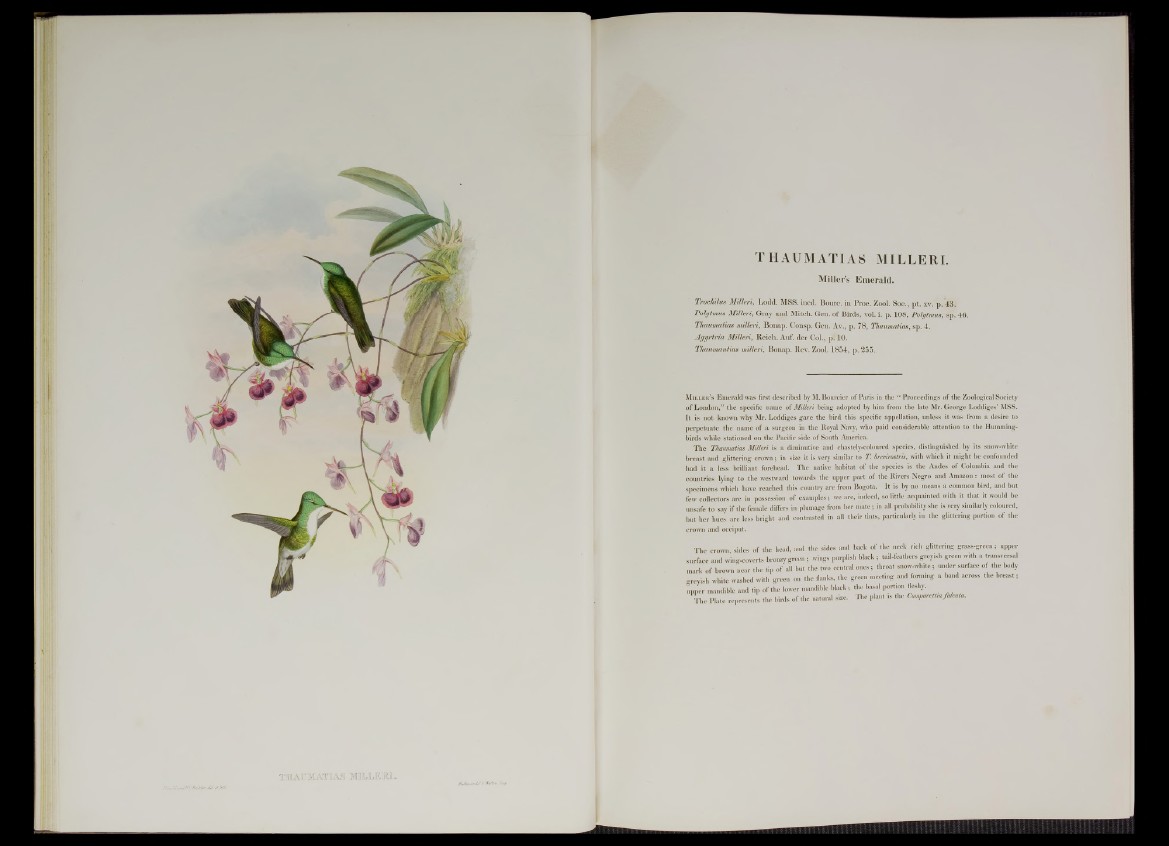
THAUMATIAS MILLERI.
Miller’s Emerald.
Trochilus Milleri, Lodd. MSS. ined. Bourc. in Proc. Zool. Soc., pt. xv. p. 43.
Polytmus Milleri, Gray and Mitch. Gen. of Birds, vol. i. p. 108, Polytmus, sp. 46.
Thaumatias milleri, Bonap. Consp. Gen. Av., p. 78, Thaumatias, sp. 4.
Ay yrtria Milleri, Reich. Anf. der Col., p. 10.
Thaumantias milleri, Bonap. Rev. Zool. 1854, p. 255.
M i l l e r ’s Emerald was first described by M . Bourcier of Paris in the “ Proceedings of the Zoological Society
of London,” the specific name of Milleri being adopted by him from the late Mr. George Loddiges’ MSS.
It is not known why Mr. Loddiges gave the bird this specific appellation, unless it was from a desire to
perpetuate the name of a surgeon in the Royal Navy, who paid considerable attention to the Humming-
birds while stationed on the Pacific side of South America.
The Thaumatias Milleri is a diminutive and chastely-coloured species, distinguished by its snow-white
breast and glittering crown; in size it is very similar to T. brevirostris, with which it might be confounded
had it a less brilliant forehead. The native habitat of the species is the Andes of Columbia and the
countries lying to the westward towards the upper part of the Rivers Negro and Amazon: most of the
specimens which have reached this country are from Bogota. It is by no means a common bird, and but
few collectors are in possession of examples; we are, indeed, so little acquainted with it that it would be
unsafe to say if the female differs in plumage from her mate; in all probability she is very similarly coloured,
but her hues are less bright and contrasted in all their tints, particularly in the glittering portion of the
crown and occiput.
The crown sides of the head, and the sides and back of the neck rich glittering grass-green I upper
surface and wing-coverts bronzy green ; wings purplish black ; tail-feathers greyish green with a transversal
mark of brown near the tip of all but the two central ones; throat snow-white I under surface of the body
greyish white washed with green on the flanks, the green meeting and forming a band across the breast;
_________B 9 .„.a of the lower mandible black; the basal portion fleshy.